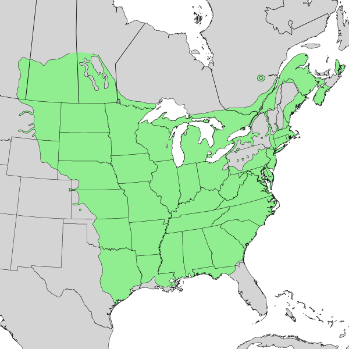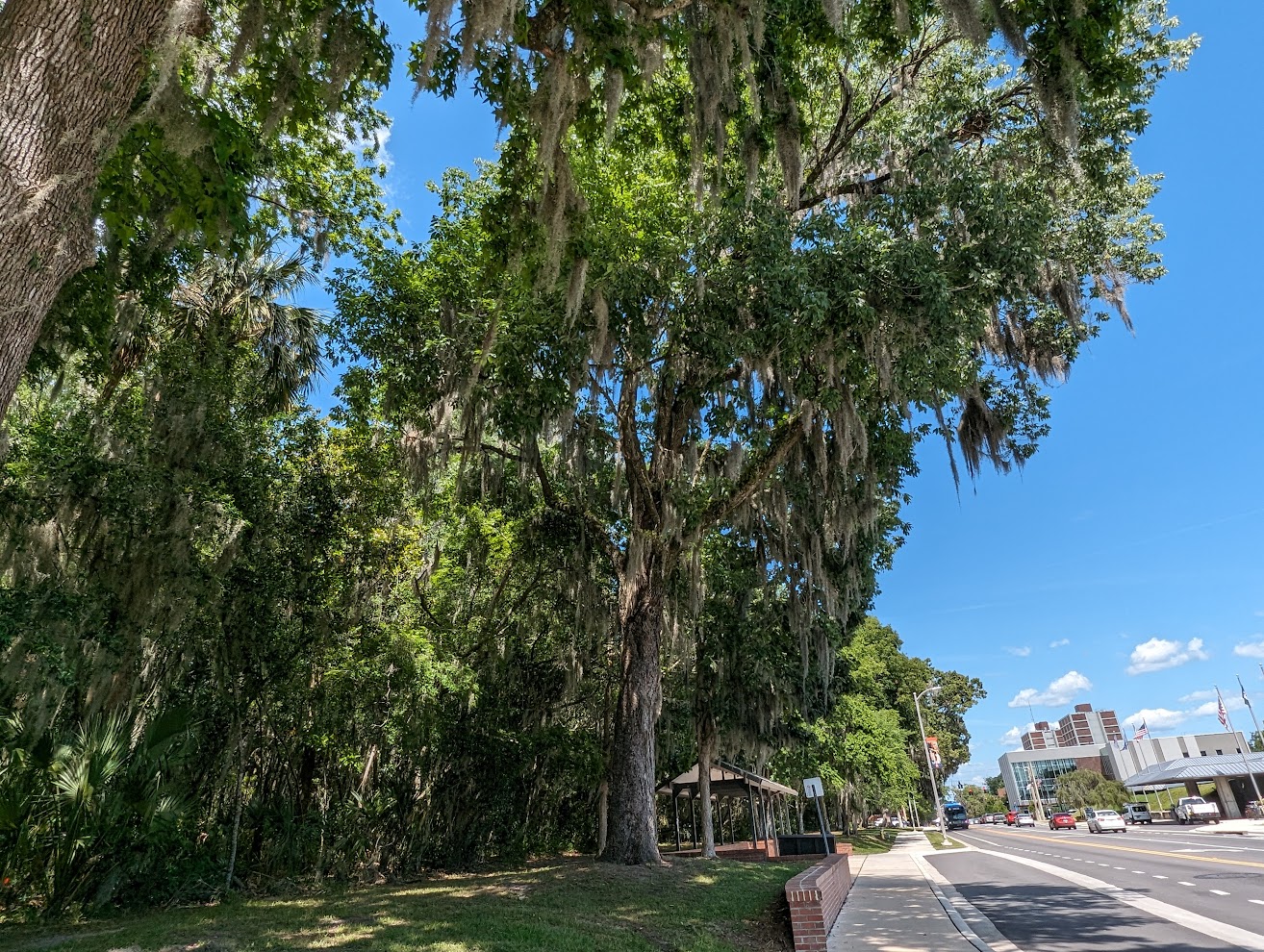Oleaceae – Olive Family
In 2024, this green ash was 74.4 feet tall and had a diameter of 30.4 inches. Based on USDA Forest Service models, it will absorb approximately 2,458.80 lbs. of carbon over the next 20 years. Put simply, this tree alone will offset up to 9,948 car miles worth of carbon dioxide.
See all species on the Campus Tree Tour.
Introduction
Green ash is one of the most widely distributed ash species of the Eastern United States. It is a medium-sized tree with a variety of uses. For instance, its wood can be used to build guitars and baseball bats. Yet, the green ash population is declining due to the introduction of the emerald ash borer, a non-native beetle. This beetle has not been found in Florida, but it has the potential to survive in its climate.
Physical Description
Life expectancy: Up to 200 – 250 years
Height: 60 – 70 feet, up to 120 feet
Crown: 45 – 50 feet
Diameter: 24 – 30 inches
Bark: Grey, brown, and tan with blocky or cris-crossing ridges making diamond-shaped (anastomosing) patterns
Leaves: Deciduous, dark green, and oppositely arranged upon the twig. Leaves are compound with 5-9 leaflets that are variably elliptic to lanceolate with entire, slightly toothed margins. Prominent bud sitting on top of the leaf scar that is shaped like a shield.
Flowers: Small greenish yellow petal-less flowers that emerge in clusters on a panicle during spring
Fruits: A samara, a seed with a wing 1 to 3 inches long.
Key Identification Characteristics: Opposite arrangement, compound leaves, bark, leaf scar
Past and Present Uses
In the 20th century, the green ash was often planted in the northern states along roads and throughout cities due to its adaptability to urban environments, disease resistance, and straight growth. However, the green ash became threatened by the emerald ash borer, a destructive and invasive beetle from Asia. These insects feed upon the tissues underneath the bark, killing mature, healthy trees in natural and urban settings. Now, green ash is less frequently planted as a shade tree.
Green ash is also a popular timber species valued for its strength, hardness, high shock resistance, and bending qualities. It is a straight growing figure with little to no knots, producing high-quality wood for specialty items. Such items include guitars, tool handles, baseball bats, and veneers.
Ecological Importance
Origin: Native to the United States
Native Range:
Found throughout eastern North America from Canada, south through Montana, down to Texas, and east to Florida (Figure 1).

Figure 1. Native range of Green Ash. Photo credit: U.S. Geological Survey
Green ash is found within a wide range throughout North America. It commonly grows in subhumid to humid climates where the soils are fertile, moist, and well-drained. The trees may move up slopes to mesic sites, however, they prefer wetter areas such as river bottoms, bottomlands, and floodplain areas. The green ash is associated with other tree species such as sugarberry, American elm, sweetgum, and bald cypress.
The green ash has ecological importance to wildlife since it provides food and shelter to a variety of birds and mammals. Gamebirds, like wood ducks and grouse, forage for the seeds, while nongame birds, like blackbirds and finches, feed upon the fruit and roost within its canopy. Beavers feed on its bark and stems, and small mammals, like white-footed mice and cottontail rabbits, eat its seeds and use the foliage as cover.
More Information
https://edis.ifas.ufl.edu/publication/ST266
References
Emerald Ash Borer. Emerald Ash Borer | Signs and Symptoms | Wisconsin DNR. (n.d.). https://dnr.wisconsin.gov/topic/foresthealth/emeraldashborer/signs
Fraxinus pennsylvanica. North Carolina Extension Gardener Plant Toolbox. (n.d.). https://plants.ces.ncsu.edu/plants/fraxinus-pennsylvanica/
Green Ash (Fraxinus pennsylvanica). bplant.org. (n.d.). https://bplant.org/plant/124#:~:text=In%20some%20areas%20and%20conditions,but%20are%20often%20shorter%2Dlived
Gucker, C. L. (2005). Fraxinus pennsylvanica. In: Fire Effects Information System. U.S. Department of Agriculture, Forest Service, Rocky Mountain Research Station, Fire Sciences Laboratory. https://www.fs.usda.gov/database/feis/plants/tree/frapen/all.html
i-Tree. (2006). Tree tools - calculate the benefits of trees!. i-Tree. https://www.itreetools.org/
Kennedy, H. E. (n.d.). Green Ash. Fraxinus Pennsylvanica Marsh. https://www.srs.fs.usda.gov/pubs/misc/ag_654/volume_2/fraxinus/pennsylvanica.htm



